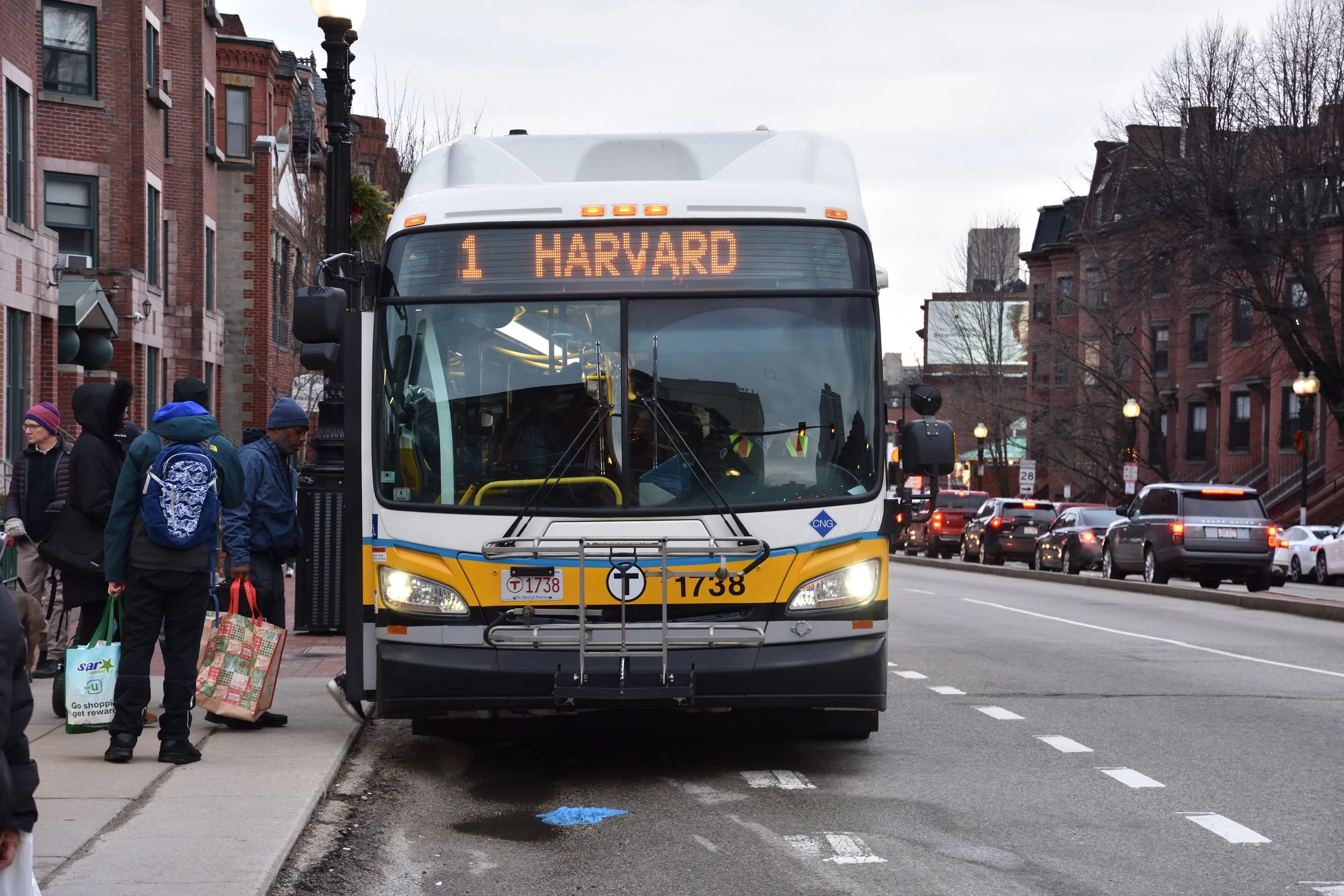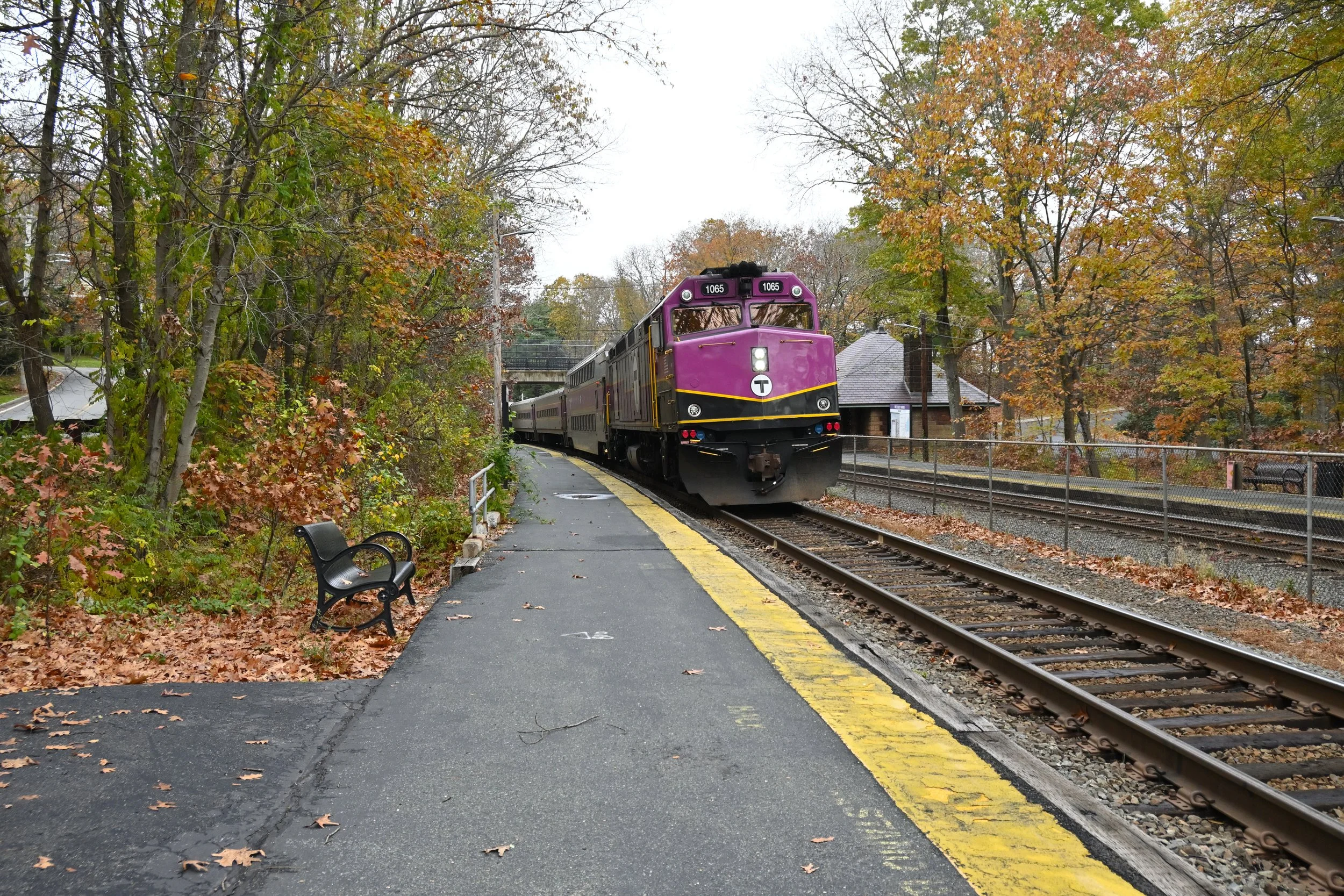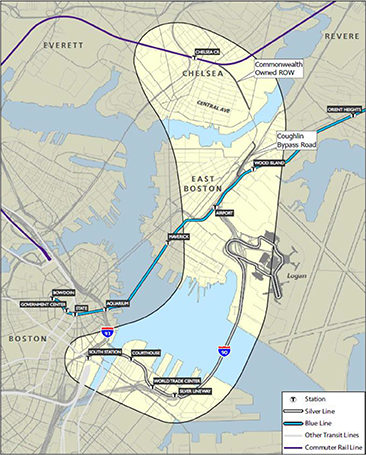This evening's meeting in the Chelsea City Hall chambers played out like how I imagine the public meetings would have gone in the planning stages of Staten Island's S79 SBS project, but perhaps with fewer pitchforks and much lighter attendance.
Chelsea and Staten Island share a lot in common, despite Chelsea not actually being incorporated into the City of Boston. Both are traversed by many bus routes and have largely been neglected parts of their metropolitan areas despite being so geographically close to downtown proper.
This is where the as yet unfunded Silver Line Gateway project is supposed to come in. Costing anywhere between $20 and 70 million for the conservative estimates of the three alternatives, the project will bring Chelsea within 20 minutes of the Seaport/Innovation district and few minutes more to South Station.
Internationally recognised as the picture of how not to implement bus rapid transit (BRT), this is an opportunity to build confidence that MassDOT can do it right while still including the public input and consideration that didn't happen with the cancelled Blue Hill Ave BRT.
Weighing the Alternatives
One of the most contentious alternatives that showed up again this evening was the street-running third alternative. It proposes elimination of parking along the spine of Central Avenue from the Chelsea Street bridge to Hawthorn Street to install a dedicated bus lane with bus signal priority. Nearly 84 spaces would be eliminated, some of which would be in front of residences in a neighbourhood already stuggling to deal with parking.
The second alternative includes an in-street bus stop in front of City Hall on Broadway, enabling buses to loop around and drop off passengers on a contiguous platform and avoid crossing two lanes of traffic. If this alternative were exercised, the various routes that pass along Broadway could offer platform transfers to the Silver Line and other bus routes. This, too, would eliminate parking, but instead metered parking in front of City Hall.
One resident suggested introducing a signallised intersection at the corner of Broadway and the Washington Ave loop to allow buses to cross the 2 lanes safely, but CTPS project manager Scott Hamwey cited this decision wasn't considered because of the noncontinuous sidewalk on the right side of Broadway opposite City Hall.
The Emotional Battle Over Parking
Chelsea's long-forgotten status has similarly led to a fondness for parking and driving as Staten Island. Various residents, interested parties, and Chelsea council members voiced stern but understandable concern over the elimination of parking and the project's potential to entice more people to drive and park in Chelsea to ride the Silver Line extension. All of these concerns of course not being unique to Chelsea, having been echoed all around the world at nearly every public meeting involving removal of parking for dedicated bus lanes to introduce BRT.
The cry for parking, more parking, or recouping lost on-street parking with more off-street parking is a clear symptom of many decades of being under served by transit. 'Parking is a very emotional issue', Hamwey said as he tried to address and acknowledge the comments on street-running alternatives.
The most emotional of these appeals was that of Matt Frank, District 3 Councillor of Chelsea. Frank cited a multi-generational concern about parking, that removing parking along Central Ave would affect families who have been in Chelsea for decades. 'You're telling them...to just leave', sending the message that, 'you can't live here anymore just because you have to drive.'
Ann Houston, executive director of The Neighborhood Developers, weighed in on the 'crazy traffic problem' and the fact that she '[lives] the parking battle every day'. Despite a recently introduced resident parking program, there is no mention of formula-based parking quotas or any allusion to a comprehensive transportation plan, which will likely mean the parking program will have little to no effect on the pressure for parking.
Ideally, those who will soon move into upcoming development of Chelsea's 'Box District', headed by Houston herself, won't need parking, especially if this project is followed-up with a re-alignment of bus routes to feed the Silver Line extension instead of duplicating its service. Besides, various indicators suggest we may have passed 'car peak', but we'll only see continued auto-dependence for some residence of Chelsea if we don't commit to improving transit now.
Beyond Chelsea's borders, the project may lure downtown workers from neighbouring towns to drive and park along the route, threatening to make 'scarce' parking more difficult to attain. Suggestions of building garages like that at Alewife to absorb the influx of drivers transferring to the Silver Line at Chelsea were not considered because they would be outside of the scope of the project.
The biggest threat to increasing parking demand in Chelsea is the ease of getting off Route 1 just before the Tobin Bridge and parking at the Mystic Mall stop in the first alternative. If not properly mitigated or abated, parking demand could spill out of the mall parking lot and into the adjacent neighbourhood.
Comprehensively Comprehending Transit in Chelsea
Commuter rail, despite being a one-stop ride into downtown Boston, is an often overlooked, non-obvious route, even to long-time residents, like Dan Cortell, Chelsea Council President. Cortell, whose mother was visiting the past weekend, admitted to forgetting about the MBCR stop on 6th Street served by the Newburyport and Rockport branches on a less-than-memorable non-clock-face schedule, even during rush hour. The commuter rail's non-integrated fare system and near-mystical fare structure also came up as a deterrent in a discussion with a member of CTPS after the meeting.
Even worse, transit is unreliable or too time-intensive as compared to driving for 'choice' riders who have the alternative to drive. Speaking frankly, Cortell admitted to having to resort to driving to his job at South Station instead of taking the 111 that stops immediately outside his house because of the debilitating traffic that chokes the 111 into Haymarket at rush hour.
One possible solution to the clear accessibility problem of Chelsea as a whole is a comprehensive evaluation and realignment of the existing bus routes in Chelsea to feed the new Silver Line extension instead of continuing to duplicate service. Cortell was very interested in the potential of wooing choice riders like himself and providing even better service to the large transit-dependent Latino community in his district.
Unfortunately, it's still too soon in the project's development for CTPS to officially start exploring, but it shouldn't be overlooked as a way to gain project support from area residents and ensure transit-oriented development in the neighbourhood doesn't suddenly become transit-oriented parking. Additionally, Chelsea needs to more seriously consider a comprehensive study on parking and ensure that the TOD doesn't induce yet more parking on the principle that parking begets driving begets parking demand (and ugly, unwalkable architecture).
Unlocking Transit-Oriented Development
The biggest threat in the long run may be the gentrification of Chelsea, which will adversely and disproportionately affect the large transit-dependent Latino community and potentially uproot those who have called Chelsea home for generations.
Transit-oriented development is needed to absorb the impending influx of new residents if the project unlocked Chelsea as a transit-accessible alternative to Cambridge, Somerville, and Boston. The rental community is at severe risk if new developments cannot stave off the increase in property desirability, potentially driving rents up in Chelsea and East Boston as high as or higher than Boston, Cambridge, or Somerville.
There is a sea of parking lots or light industrial that could be developed adjacent the Tobin Bridge and the area surrounding the Mystic Mall. These would be well-served not only by the Silver Line extension, but also the comprehensive realignment of buses to improve transit accessibility within the city of Chelsea.
It's imperative Chelsea and MassDOT get ahead of the game with value capture taxes because capital projects that induce development don't come along often. Not only would this fill the city coffers with yet more revenue than the increase in property taxes from new developments, it could pay back the cost of the project and potentially fund more transportation projects down the line.
Imagine a tunnel under the Mystic River to eliminate the Tobin Bridge that could include commuter rail tunnels to provide new underground transit connections to Charlestown on the way to North Station as part of a complete realignment of the Newburyport/Rockport branch through Chelsea as part of a Central Transit Artery.
The Devil is in the Details
The project is still in its preliminary stages and a recommended alternative will be submitted by September as CTPS continues to flesh out the details of operation and construction for each alternative.
Alternative 1 runs almost exclusively on property already owned by MassDOT and would have minimal interference from road traffic. It does not yet include any specifics about whether or not the route could be electrified with overhead trolley wire to let the existing dual-mode buses running on the Silver Line to resume electric operation from the airport to the Mystic Mall. As the project marches closer to potential implementation, it will become more clear which type of bus technology will be selected for the project.
The biggest potential is for a pilot of a new rapid-recharging system for electric buses that joins a growing number of solutions for recharging electric buses when they idle at stops to pick up passengers. Electric buses would minimise the amount of noise generated by the higher frequency of buses running along the route and cut out entirely the loud characteristic roar generated by diesel buses when they accelerate.
There's even potential for a bike path along the off-street grid bus route, but it is still too early to be included in the scope of the project.
Of course, this is all but a glimmer in the eye of many Chelsea and East Boston residents, the CTPS, and MBTA/MassDOT until the Legislature can get its act together and finalise its long-anticipated path forward in transport finance.










